I’ve been living a location-independent life for over 10 years now. What I find is most important to be able to work from anywhere is, of course, good WiFi — but also a great laptop that won’t ever let me down.
If you’ll be working from the road or from different locations than your home, your requirements may be a bit different from a home office laptop. It’s important to have plenty of storage capacity and speed, but portability and long battery life are key factors as well.
But before I recommend the best laptops for working remotely, let’s consider what kind of remote worker or digital nomad you are (or will be).
There are many types of nomads, from the ultralight one-bag traveler working from the most remote locations on Earth, to the ‘slowmad’ settling down in places for months at a time while hauling their laptop, external monitor, VR headset, crypto server farm, etc. along with each move.
How you work remotely and travel will inform what type of laptop is best for you.
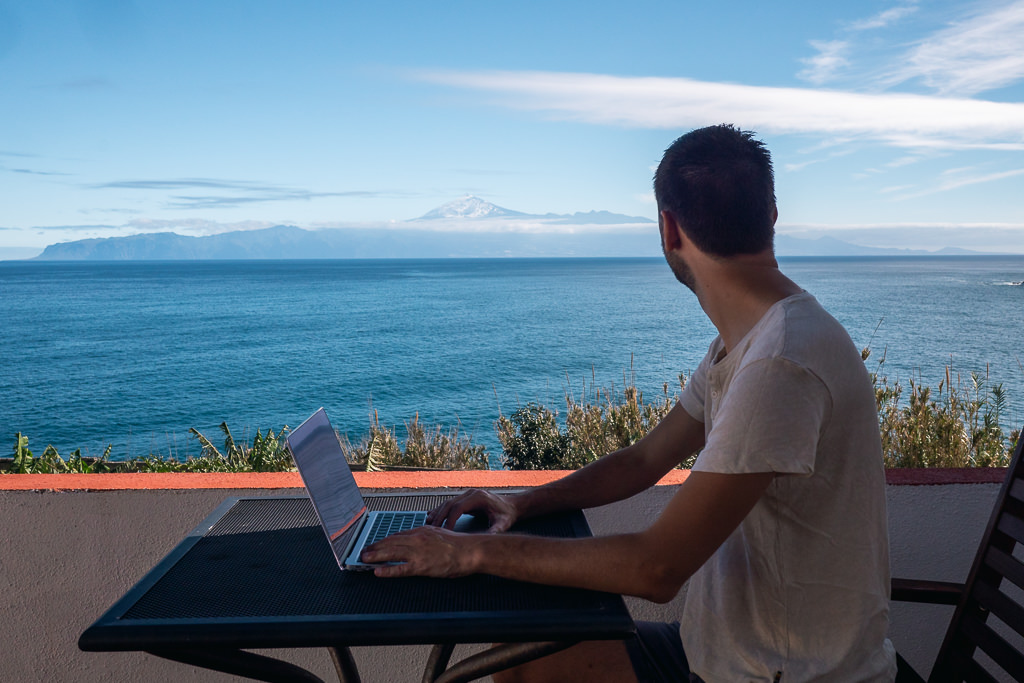
What kind of ‘digital nomad’ are you?
The broke nomad
You don’t quite know yet how you’re going to make money remotely, but you will figure it out somehow. You’re in startup mode and can’t spend too much yet; you just need an affordable laptop that lets you do some web design, coding, docs/sheet work while you hustle your way to greater fortune. You need: a decent Chromebook or cheap Windows laptop
The roving nomad
You have your online business up and running and can invest in your gear. You truly work from anywhere and switch locations all the time — whether it’s a cafe, a co-work, the beach, or the very top of Mt. Fuji (fun fact: there is WiFi there!). You’ll want a laptop with both great power and portability. You need: a lightweight ultrabook like a Dell XPS or Macbook
The basecamp nomad
You stay in places many weeks or months at a time, preferring a stable working environment to switching locations constantly. You’ve slowed down or you tend to work from a specific location, so you don’t mind a bit more packing weight to bring all your favorite gear. You need: whatever powerful laptop you like (consider a 15″ Dell Inspiron)
Best laptops for working remotely
Want the best?
For both strong portability and capability, ultrabooks are often your best bet.
These lightweight travel laptops — such as the Dell XPS, the Microsoft Surface Laptop or Surface Book, and Macbook Air, have a great balance between power and weight/size.
Ultrabooks often weigh no more than about 2.7 lbs / 1.2 kg. This makes them very easy to slip into a daypack or carry to a co-working office.
They can typically handle most tasks, though high-fps hardcore gaming or very intense video editing may require a laptop more focused on raw power (like a Macbook Pro).
On a budget?
Then consider a Chromebook. Mind you, these ultra-cheap laptops don’t run Windows, but an operating system built around the Chrome web browser (they also can run many Android apps). But because they don’t need a Windows license and because they are no-frills systems, they are very cheap to buy.
I’ve long used an Acer Chromebook as a cheap travel laptop. It’s perfect for typing, sheets/docs, or video conferencing — and at around $250 they’re an easy purchase.
Consider a Chromebook if for example you’re a writer, translator, blogger, or online teacher — and you don’t need to use a lot of video or image editing apps.
Quick Overview: Best laptops for working remotely
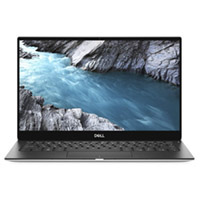
Dell XPS 13"
Best premium PC travel laptop
- 11th generation Intel Core processors
- Super thin bezel screens
- Only 2.7 pounds (1.23kg)
- Best lightweight high-performance laptop for Windows
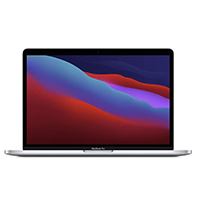
New Macbook Air (M Chip)
Best battery life + performance
- M chip is faster & uses less power
- Up to 20 (!) hours of battery life
- Up to 2TB storage
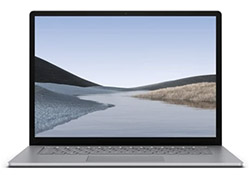
Microsoft Surface Laptop 4
- 11th generation Intel Core processors
- 13.5” touch screen with 3:2 ratio (more vertical space)
- 3.4 pounds (1.54 kg)
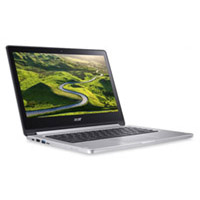
Acer Chromebook
Best low-budget option!
- 64GB storage space
- Intel Celeron N4000 processor
- Runs ChromeOS (not Windows)
- Amazing value, ideal for light work
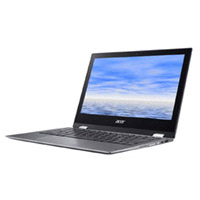
Acer Spin 5
- 10th Gen Intel Core processor
- 14" touch display - can be used in 'tablet mode'
- 3.7 pounds (1.70 kg)
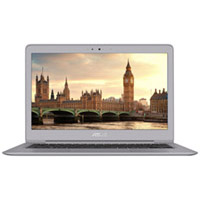
Asus ZenBook
- 13.3 Inch Anti-glare FHD 1920 x 1080 Display
- Latest 8th Gen Intel i5-8250U 1.6 GHz Processor
- 2.7 lbs (1.23 kg)
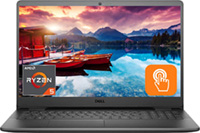
Dell Inspiron 15"
Larger/heavier option (great work station)
- Large 15.6" screen
- 1TB drive
- 16GB memory
- 1.8kg / 4lbs
Dell XPS 13″
Pros
- High-end 'it does everything' laptop with superb performance
- One of the thinnest screen bezels (makes it more portable)
- Latest 10th gen processors
Cons
- 4K and OLED versions have slightly less battery life
If you’re looking for the best digital nomad laptop that runs on Windows, then look no further than the Dell XPS. Besides the Apple Macbook Pro, it’s the Dell XPS I see most often at nomad meetups and in co-working offices. I happily used an XPS myself for several years.
Firstly, it has a remarkably thin screen bezel, which looks great but also means it’s smaller and more portable. The XPS 13, for example, has a 13″ sized screen, but the chassis size is similar to a thick-bezel 12″ laptop. The 15″ version has a chassis closer to a normal 14″.
If portability is most important to you, then consider the 13 inch XPS. At 2.7 pounds (1.23kg), it’s one of the lightest travel laptops around.
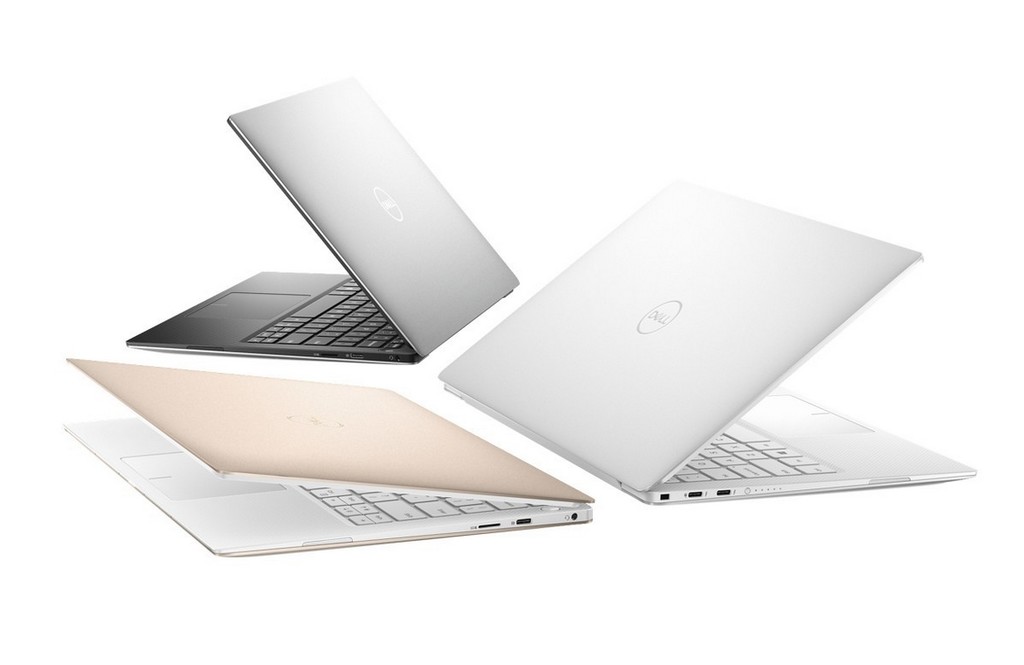
The basic configuration starts at about $1000, but there are better options with more processing speed, hard drive space, and so on. Since I want to do video and photo editing, I got an Intel i7 chip option with 1TB of harddrive space. But if you mainly use your laptop for office applications, you could make do with a cheaper Intel i5 configuration. You can view the different configurations at Dell.
All configurations have an insane 500-nit anti-glare screen. This is very bright, so you may often need to tone it down a little when working from an office. But in bright outdoor settings, the screen works amazingly well, ensuring you can see the details on the screen even when it’s sunny. You can choose between touch or non-touch displays; the latter will give you a little more battery life (personally, I don’t see much advantage in getting a touch screen).
Although it depends on which apps you use, the battery life can be up to 12 hours.
The Dell XPS 13 can handle pretty much anything, though if you use a lot of 3D applications or want to do some (light) gaming, consider the Dell XPS 15, which has a dedicated graphics card and bigger screen, while still being nicely portable.
Macbook Air (New M Chip)

Pros
- Industry-leading battery life (18+ hours)
- 8-core CPU
- Bright 500 nits Retina display
- Weighs 1.29 kg (2.8 pounds)
- Apple warranty and support
Cons
- Won't run Windows-only apps
While I’ve listed the Dell XPS here first because most users want to use Windows, I actually believe Apple has the best laptops that let you work remotely from anywhere. I switched from an XPS to a Macbook when the new M-chips came out and I’ve been blown away with the speed and battery life. If you’re okay with using MacOS, they’re simply spectacular.
Apple stopped using Intel processors and went with a new ARM-based M1 chip, which allows for much higher performance while drawing less power. It gives the Macbook Air and Macbook Pro an unprecedented battery life of 18 to 20 hours.
The new chips are also insanely fast. I use a Macbook Air M1 as my main laptop and can say that it felt like a leap into the future. In many benchmarks, a $999+ Macbook Air M1 will routinely beat a $2000+ previous generation Macbook Pro.
When comparing specs, keep in mind that the Macbooks utilize memory a lot more efficiently, so 8GB of shared memory on a new Macbook is more akin to 16GB on a Windows laptop.
The Macbook Air 13″ is a great choice for general work purposes. If you do a lot of video editing or other heavy applications, the Macbook Pro might give you a bit better performance.
Microsoft Surface Laptop 3
Pros
- Microsoft's flagship ultrabook
- Up to 15 hours battery life
- Great performance
Cons
- No Thunderbolt 3 port
For many years now, Microsoft has been making its own devices under the Surface brand, serving as a flagship offering for Windows PCs. There is a wild variety of devices carrying the Surface name, which can be a bit confusing. But if you’re after a full-blown laptop then the Surface Laptop 3 is the one to look at, having an ultrabook form factor with a slim design.
The Surface Laptop is similar to the Dell XPS in terms of capabilities and is more streamlined than Microsoft’s own Surface Book. The battery can last a good 15 hours depending on use.
One reason why some nomads may prefer the Surface Laptop is the screen, which is in 3:2 aspect ratio, instead of widescreen. This gives you extra vertical space when scrolling documents, or for placing your various toolbars. This is similar to the Apple Macbooks, which have a 3:2 ratio as well.
The Surface Laptop 3 is better than the 2nd itineration in a number of areas. It introduces battery fast-charging (80% charge within 1 hour) which is perfect for travel. It now also uses USB-C, letting you easily get an additional charge from a powerbank.
Acer Chromebook
Pros
- 64 GB storage (plus free cloud storage)
- Intel Celeron N4000 processor
- Slimmed down ChromeOS system
Cons
- Doesn't run Windows apps
Want a no-frills and inexpensive laptop for remote work? Then a Chromebook can be an incredibly tempting option, so long as you know what to expect. Chromebooks don’t run a full operating system like Windows 11, but a more basic one designed around the Chrome browser. They can also run most (but not all) Android apps.
You can’t run professional-grade video editing software or Adobe Photoshop on them, and instead of Microsoft Office you’ll have to use the free Google Docs and Sheets apps or Microsoft’s Office Online for Chrome. That said, for internet browsing, watching movies, basic photo editing, and everyday office suite use, a Chromebook will easily get the job done. Many recent models will also run Android apps (much like any tablet), making them excellent travel companions.
The Acer Chromebook is my recommended choice. For starters it’s just amazing value, with the 13″ version selling for under $400 and the 11″ version selling for around $300. Judged on specs alone it might not seem like the fastest machine, but since it’s optimized for Chrome it’s surprisingly snappy in day-to-day use.
Mind you, this isn’t a premium laptop. The screen has a thick bezel that looks nowhere near as sleek as a Dell XPS or Macbook screen. The standard trackpad is quite clicky and not as buttery smooth as a glass trackpad found on many ultrabooks. But, hey, what do you expect for a couple of hundred dollars? Given what it can do, it’s a steal.
I traveled with a 13″ Acer Chromebook for a long time as it’s a cheap option, weighs little, and is perfectly fine for most types of basic online work.
Acer Spin 3
Pros
- Great value for money
- 2-in-1 laptop (also use as tablet)
- Updated with 10th Gen processors
Cons
- HD space limited to 256GB
- Fairly standard 1080p display
Looking for a more budget-friendly Windows option? Then the Acer Spin 3 has got you covered. It’s been updated with 10th Generation Intel processors in June 2020, though the previous 8th gen Acer Spin version is still for sale, potentially at clearance prices.
(A bit confusingly, the 3 in Acer Spin 3 is a brand name, not a version, so both are called the same. Acer Spin 5 is a different 15.6″ laptop.)

The Acer Spin 3 is a convertible 13″ laptop, meaning you can use it in tablet mode, tent mode (for media viewing), or like a regular laptop. It comes with a stylus, which is great for note-taking and creativity apps.
It has a USB-C port with Thunderbolt 3 functionality for easy connectivity and charging.
The most basic model sells for $499 with the most specced out version going for $799. If you’re looking for best value for money, you may want to consider the $699 configuration, which gives you a fast i5 processor and 256 GB of SSD storage space.
Some links may be affiliate links, meaning I may earn commission from products or services I recommend. For more, see site policies.
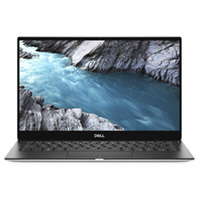
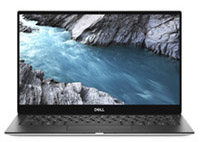

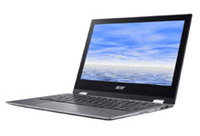





0 comments
Leave a comment
Your email address will not be published. Comments are manually moderated.